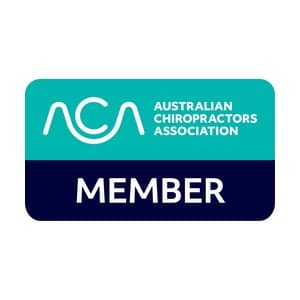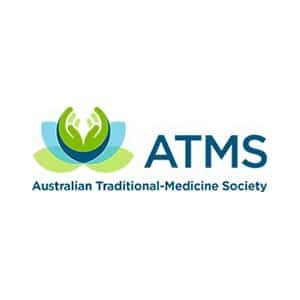Numerous studies throughout the world have shown that chiropractic treatment, including manipulative therapy and spinal adjustment, is both safe and effective. Many other studies have shown that chiropractic care can contain costs and get workers back on the job in less time than other treatments.
Government Research
The Agency for Health Care Policy and Research (AHCPR)
A panel of 23, supported by a staff of 200 leading back experts, was commissioned by the U.S. Office of Public Health to study treatment methods for back pain. They reviewed the thousands of studies that address this issue. After selecting the best scientifically-based studies, they concluded that spinal manipulation (94% of which is done by chiropractors) was clearly superior to any other treatment for low back pain.
The AHCPR published guidelines which stated that conservative spinal manipulation should be tried first, before any of the more traditional approaches.
Manga Report
This unbiased independent study commissioned by the Ontario Ministry of Health showed that chiropractic treatment is cost effective, safe, has a high rate of patient satisfaction and is more effective than medical treatment for low back pain.
The report also recommended that the management of low back pain be moved from Medical Doctors to Doctors of Chiropractic and that hospital privileges be extended to chiropractors.
Some key findings outlined in the Executive Summary:
- Evidence from numerous countries indicate a great number of non-chiropractic treatments administered for low back pain show little if any effectiveness when assessed scientifically.
- Many traditional medical therapies are of questionable usefulness and clearly inadequate.
- There is no evidence that chiropractic treatment is unsafe for the treatment of low back pain.
- There is evidence that spinal manipulation (adjusting) is not as safe or effective when performed by non chiropractors as it is by chiropractors.
- Chiropractic care is safer and more cost effective than medical care for low back pain.
- Workers’ Compensation literature shows that chiropractors return injured workers to work faster than medical physicians care for the same diagnosis.
- Patient satisfaction is higher when treated for low back pain by chiropractors than by the established medical community.
RAND Study
The Rand Study (published in 1991) set out to study the appropriateness of spinal manipulation applied to low back pain. The report was so extensive it reviewed the scientific literature from 1952 to 1991. The data was collected from 76 different sources and included 22 controlled trials that addressed the use of spinal manipulation for low back pain.
After settling on the body of literature they decided worthy of consideration, they concluded, “… support is consistent for the use of spinal manipulation as a treatment for patients with acute low back pain and an absence of other signs or symptoms of lower limb nerve root involvement.”
The following are excerpts from a few recent studies For Acute Low-Back Problems:
“For patients with acute low-back symptoms without radiculopathy, the scientific evidence suggests spinal manipulation is effective in reducing pain and perhaps speeding recovery within the first month of symptoms.”
– Clinical Practice Guidelines, AHCPR (1994)
For Long-Term Low-Back Problems:
“There is strong evidence that manipulation is more effective than a placebo treatment for chronic low-back pain or than usual care by the general practitioner, bed rest, analgesics and massage.”
– Spine, Van Tulder and Bouter et al. (1997)
“…improvement in all patients at three years was about 29% more in those treated by chiropractors than in those treated by the hospitals. The beneficial effect of chiropractic on pain was particularly clear.”
– British Medical Journal, Meade et al. (1995)
“Manipulative therapy and physiotherapy are better than general practitioner and placebo treatment. Furthermore, manipulative therapy is slightly better than physiotherapy after 12 months.”
– British Medical Journal, Koes et al. (1992)
For Pain:
“…patients suffering from back and/or neck complaints experience chiropractic care as an effective means of resolving or ameliorating pain and functional impairments, thus reinforcing previous results showing the benefits of chiropractic treatment for back and neck pain.”
– Journal of Manipulative and Physiological Therapeutics, Verhoef et al. (1997)
“…for the management of low-back pain, chiropractic care is the most effective treatment, and it should be fully integrated into the government’s health care system.”
– The Manga Report (1993)
For Headaches:
“Cervical spine manipulation was associated with significant improvement in headache outcomes in trials involving patients with neck pain and/or neck dysfunction and headache.”
– Duke Evidence Report, McCrory, Penzlen, Hasselblad, Gray (2001)
“The results of this study show that spinal manipulative therapy is an effective treatment for tension headaches. Four weeks after cessation of treatment… the patients who received spinal manipulative therapy experienced a sustained therapeutic benefit in all major outcomes in contrast to the patients that received amitriptyline therapy, who reverted to baseline values.”
– Journal of Manipulative and Physiological Therapeutics, Boline et al. (1995)
For the Elderly:
“[Elderly] chiropractic users were less likely to have been hospitalised, less likely to have used a nursing home, more likely to report a better health status, more likely to exercise vigorously, and more likely to be mobile in the community. In addition, they were less likely to use prescription drugs.”
– Topics in Clinical Chiropractic, Coulter et al. (1996
For Containing Costs and Getting Workers Back on the Job:
“The overwhelming body of evidence” shows that chiropractic management of low-back pain is more cost-effective than medical management, and that “many medical therapies are of questionable validity or are clearly inadequate.”
– The Manga Report (1993)
First contact chiropractic care for common low back conditions costs substantially less than traditional medical treatment and “deserves careful consideration” by managed care executives concerned with controlling health care spending.
– Medical Care, Stano and Smith (1996)
Popularity of Complementary and Alternative Medicine:
“acupuncture…had a 200 percent increase in volume from 1999 to 2002, and chiropractic care…rose 91 percent in that three year period.”
– Top Growth Areas in the Outpatient market.





